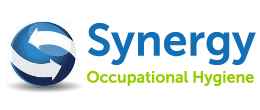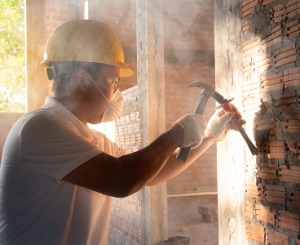We will help you to comply with COSHH. Call us today!
Trusted by Leading Businesses
What is Occupational Hygiene?
Occupational hygiene is the science of anticipating, identifying, evaluating, and controlling occupational hazards to prevent adverse health effects. It is a multidisciplinary field that encompasses a wide range of skills, including chemistry, engineering, physics, and biology.
Workplace Exposure Hazards
Metalworking Fluid Exposure
Companies use Metalworking fluid (MWF) to lubricate and cool processes that involve machining of metal. Generally, this is drilling, cutting, milling and CNC…
Welding Fume Exposure
Welding is a common practice in many workplaces and sites. However, the health effects and control of welding fumes have recently been subject to more scrutiny than in the past…
Dust Exposure
Occupational hygiene consultants class dust exposure as exposure to inhalable, thoracic or respirable dust. Inhalable dust, in particular, consists of larger particles, that enter the upper parts of the lungs…
Respirable Crystalline Silica
Industries that use sand or process stone often produce respirable crystalline silica (RCS). Generally, these industries are masonry, construction and quarries…
VOC Exposure
Exposure to volatile organic compounds (VOCs), also known as solvents, occur in a wide variety of industrial, medical, office and residential settings. In particular, companies use them in solvents and fixing agents…
Diesel Fume Exposure
Diesel engine exhaust emissions (DEEEs), also commonly referred to as diesel fume are of growing concern across the industry…
Wood Dust Exposure
Occupational hygiene consultants class both hardwood dust and softwood dust as respiratory sensitisers as they can cause asthma. In addition, it only worsens overtime…
Flour Dust Exposure
Flour dust exposure is prevalent amongst bakeries, mills and the catering industry as a whole. The HSE refers to flour as a respiratory sensitiser…
Independence
Fast Reports
UK Wide
Bespoke Service
Industry Experience
What is Occupational Hygiene?
What is Occupational Hygiene
Occupational hygienists work to protect workers from a variety of hazards, including:
Chemical hazards:
These include airborne contaminants, such as dust, fumes, and vapours, as well as chemicals that can be absorbed through the skin or ingested.
Physical hazards:
These include noise, vibration, heat, cold, radiation, and ergonomics.
Biological hazards:
These include bacteria, viruses, fungi, and parasites.
How do Occupational Hygienists Work?
What does the Occupational Hygiene Consultant do?
Occupational hygienists typically use a four-step process to protect workers from hazards:
Anticipation:
Occupational hygienists first identify potential hazards in the workplace. This can be done by reviewing work processes, inspecting equipment, and talking to workers.
Recognition:
Once potential hazards have been identified, occupational hygienists assess the level of exposure. This can be done by measuring the concentration of airborne contaminants, measuring noise levels, or assessing the ergonomic demands of a job.
Evaluation:
Occupational hygienists then compare the level of exposure to Workplace exposure limits (WELs). WELs are the maximum levels of exposure to a hazard that are considered safe for workers.
Control:
If the level of exposure exceeds the WEL, occupational hygienists recommend control measures to reduce the exposure. Control measures can include engineering controls, such as ventilation systems, administrative controls, such as work practices and training, and personal protective equipment (PPE).
The Importance of Occupational Hygiene
The Importance of Occupational Hygiene
Occupational hygiene is important because it helps to protect workers from a variety of health hazards. Exposure to occupational hazards can cause a range of health problems, including:
Respiratory problems: Asthma, bronchitis, and lung cancer are just a few of the respiratory problems that can be caused by exposure to occupational hazards.
Skin problems: Dermatitis, allergies, and cancer are all potential skin problems that can be caused by exposure to occupational hazards.
Cancer: Many occupational hazards are carcinogens, meaning that they can cause cancer.
Neurological problems: Headaches, dizziness, and memory loss are just a few of the neurological problems that can be caused by exposure to occupational hazards.
Reproductive problems: Infertility, birth defects, and miscarriage are all potential reproductive problems that can be caused by exposure to occupational hazards.
Occupational hygiene can help to prevent these health problems by identifying and controlling hazards.
Examples of Occupational Hygiene in Action
Here are a few examples of how occupational hygiene is used in the workplace:
Construction Occupational Hazards
Construction workers are exposed to a variety of occupational hazards, including dust, noise, and vibration. Occupational hygienists work with construction companies to develop and implement control measures to reduce these hazards. For example, occupational hygienists might recommend using dust collection systems to reduce dust exposure, using earplugs or earmuffs to reduce noise exposure, and using anti-vibration gloves to reduce vibration exposure.
Healthcare workers
Healthcare workers are exposed to various occupational hazards, including bloodborne pathogens, sharps injuries, hazardous drugs and anaesthetic gases. Occupational hygienists work with healthcare facilities to develop and implement control measures to reduce these hazards. For example, occupational hygienists might recommend using sharps containers to safely dispose of needles, using personal protective equipment (PPE) when handling hazardous drugs, and vaccinating healthcare workers against bloodborne pathogens.
Manufacturing workers risk from noise, airborne substances, and vibrations
Manufacturing workers are exposed to a variety of occupational hazards, including chemical hazards, physical hazards, and ergonomic hazards. Occupational hygienists work with manufacturing companies to develop and implement control measures to reduce these hazards. For example, occupational hygienists might recommend using engineering controls, such as ventilation systems, to reduce chemical exposure, installing ergonomic workstations to reduce ergonomic hazards, and providing workers with training on how to handle chemicals and equipment safely.
Bakery workers
Occupational hygiene in bakeries involving flour handling is crucial for worker safety. Flour dust poses respiratory risks, causing allergic reactions like baker’s asthma. Implementing control measures like ventilation systems, proper storage, and handling techniques is vital. Enclosed machinery and personal protective equipment (PPE) such as masks can minimize exposure. Regular cleaning schedules for work surfaces and equipment help reduce airborne particles. Training on hygiene practices and recognizing symptoms of flour-related illnesses are essential for a healthy bakery environment, ensuring worker well-being and productivity.
Office worker with a badly designed workstation
Office workers are exposed to a variety of ergonomic hazards, such as repetitive motions and poor posture. Occupational hygienists work with businesses to develop and implement ergonomic programs to reduce these hazards. For example, occupational hygienists might recommend adjusting workstations, providing employees with ergonomic training, and encouraging employees to take breaks throughout the day
Preparing for an Occupational Hygienist’s Visit
Synergy’s Occupational Hygiene Director, Mathew Hayes, says that there are a few specific things that customers should do to prepare for workplace air monitoring.
- Provide the occupational hygienist with all relevant information about the workplace. This includes information about the processes and activities that you carry out, the substances that your company uses, and any existing exposure control measures.
- Identify the specific airborne hazards that we need to monitor. You should base this on the results of COSHH assessments, employee feedback, or other evidence.
- Provide the occupational hygienist with access to the workplace. This will allow them to conduct a walk-through survey and identify suitable sampling locations.
- Cooperate with the occupational hygienist during the monitoring activity. This may involve providing information about employee work schedules, ensuring that employees have access to the necessary PPE, and collecting and transporting samples to the laboratory.
Once the monitoring activity has been completed, the occupational hygienist will provide a report with the results and their recommendations. The customer should review the report carefully and take appropriate action to address any identified hazards.
Here are some additional tips for customers:
- Be clear about your objectives for the Occupational Hygiene monitoring. Are you trying to:
- determine compliance with occupational exposure limits (WELs)?
- Assess the effectiveness of existing exposure control measures?
- Identify new hazards?
Once you know your objectives, the occupational hygienist will develop a monitoring plan and tailor it to your needs.
Ask questions. If you are unsure about anything, don’t be afraid to ask the occupational hygienist for clarification. They are there to help you understand the monitoring process and the results.
Use the results of the occupational Hygiene monitoring to make improvements to your workplace. If the results show that there are hazards present, take appropriate action to eliminate or reduce exposure. This may involve implementing new engineering controls, administrative controls, or PPE.
Repeat the monitoring activity regularly. This will help you to ensure that exposure control measures are effective and that new hazards are not introduced.
By following these tips, customers can help to ensure that workplace air monitoring is conducted efficiently and effectively. This will help to protect the health and safety of workers.
Here’s why you should use Synergy for your Occupational Hygiene
Are you concerned about the health and safety of your employees in the workplace? Do you want to ensure that your business is compliant with all occupational health and safety regulations?
If the answer is yes, then it’s time to take action and partner with Synergy Environmental Solutions for our comprehensive Occupational Hygiene services.
Occupational hygiene is a critical aspect of any business, regardless of its size or industry. It focuses on identifying, assessing, and controlling workplace hazards that could negatively impact the health and well-being of your employees. Synergy Environmental Solutions understands the importance of creating a safe and healthy work environment, and we’re here to help you achieve that goal.
We design our Occupational Hygiene services to address a wide range of workplace health and safety concerns. Here’s why you should choose Synergy Environmental Solutions:
Expertise and Experience:
With years of experience in the field, our team of certified occupational hygienists and occupational health professionals bring a wealth of knowledge and expertise to every project. We have a proven track record of successfully helping businesses like yours improve their occupational hygiene practices.
Customized Solutions:
We understand that every workplace is unique, and so are its occupational hygiene needs. We tailor our services to your specific requirements, ensuring that you receive a solution that is both effective and cost-efficient.
Regulatory Compliance:
Occupational health and safety regulations are constantly evolving. It can be challenging to keep up with the latest requirements and ensure your business remains compliant. Synergy Environmental Solutions keeps abreast of all relevant regulations and guidelines, guaranteeing that your workplace adheres to the highest standards.
Employee Well-Being:
Investing in occupational hygiene isn’t just about compliance; it’s about caring for your employees. By creating a safe and healthy work environment, you boost employee morale and productivity, reduce absenteeism, and demonstrate your commitment to their well-being.
Cost Savings:
Preventing workplace accidents and illnesses not only safeguards your employees but also saves your business money in the long run. Fewer accidents mean lower workers’ compensation costs, reduced liability, and increased operational efficiency.
Reputation and Trust:
A business that prioritizes occupational hygiene earns the trust and respect of customers, partners, and employees. It’s a powerful way to enhance your brand and reputation in your industry. Don’t wait until a workplace incident occurs or regulatory fines become a burden. Take action now and partner with Synergy Environmental Solutions for our Occupational Hygiene services. Let us help you create a safer, healthier, and more productive work environment that benefits both your business and your employees.
Contact us today to discuss your specific needs and receive a customized proposal that outlines the ways we can improve your occupational hygiene practices. Together, we can build a better, safer future for your business.























